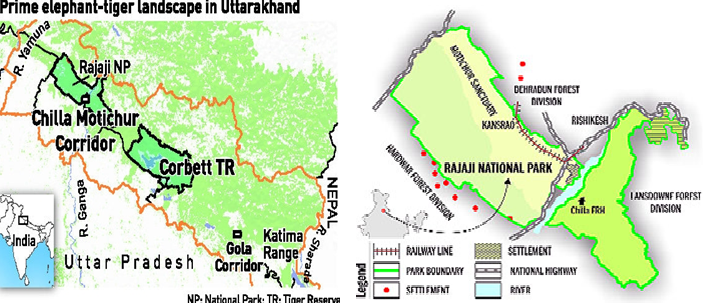Why in news?
The Conservation Assured | Tiger Standards (CA|TS) recently published a report titled 'Safe Havens for Wild Tigers'.
What is the report on?
- CA|TS report was on the results of a survey of site-based tiger conservation across Asia.
- The survey assessed the current management methodologies at 112 sites located in 11 tiger-range countries, including India.
- The survey is the first and largest rapid assessment of site-based tiger conservation across Asia.
- It has been driven by 11 conservation organisations and tiger-range governments that are part of the CA|TS coalition.
- The results show whether or not governments are investing sufficient funds into tiger conservation.
- This study also shows the reality of the progress made under the St Petersburg Declaration.
What are the key findings?
- Only 13% of the tiger conservation areas met the global standards of an accreditation system.
- Of the 112 global sites surveyed, only 12.5% was currently able to meet the full CA|TS criteria.
- Nearly half of the assessed sites reported fairly strong management, although improvements are needed.
- South Asian and East Asian countries like Bangladesh, Bhutan, China, India, Nepal and Russia had management plans.
- The remaining 35% did not have management plans and showed relatively weak management.
- Notably, a majority of these are in Southeast Asia, including Cambodia, Indonesia, Malaysia, Myanmar and Thailand.
- Three of the 13 tiger range countries, Laos, Vietnam, and Cambodia have lost all their tigers.
What are the concerns?
- Basic needs remain weak for all tiger conservation areas surveyed.
- These include enforcement of laws against poaching, engaging local communities and managing conflicts between people and wildlife.
- Staff capacity to patrol the sites effectively and anti-poaching enforcement remain weak, despite the serious threat of poaching.
- Only 16 of 112 sites had intelligence-driven anti-poaching processes in place.
- Ineffective management of tiger conservation areas had led to the extinction of tigers from certain key areas.
What are the accredited sites?
- To date, only three sites have been awarded CA|TS Approved status.
- These are
- Lansdowne Forest Division in Uttarakhand, India
- Chitwan National Park in Nepal
- Sikhote-Alin Nature Reserve in Russia
- Lansdowne Forest Division, Uttarakhand, accredited in May 2017, is the third CA|TS accredited site globally and the first in India.
- It is significant since it is a crucial link between the Rajaji and Corbett tiger reserves.

What does it call for?
- Low investment from governments in Southeast Asia was one of the reasons for the lack of management.
- Thus, long-term investment in tiger conservation areas is called for.
- This is absolutely essential to halt and reverse the decline of wild tigers.
- The tiger-range governments should thus take the lead responsibility.
Source: Business Line, Indian Express
Quick Facts
Conservation Assured | Tiger Standards (CA|TS)
- CA|TS is an important tool in the achievement of the Convention on Biological Diversity - CBD’s Global Aichi Targets.
- CA|TS is a management tool which sets basic criteria such as the minimum standards for effective management of tiger conservation reserves.
- It also applies to other conservation reserves and protected areas which have tiger populations.
- It contributes to the implementation of the Programme of Work on Protected Areas.
- The CA|TS team has been working closely with the IUCN.
St Petersburg Declaration
- In November 2010, the first “Tiger Summit” in St Petersburg, Russia, endorsed a Global Tiger Recovery Programme.
- The programme aimed at reversing the rapid decline of tigers, and doubling their numbers by 2022.
- India was one of the 13 tiger range countries that participated in the gathering.
- The leaders committed to drawing up action plans to -
- strengthen the tiger reserves
- crack down on poachers
- provide financial assistance to maintain a thriving tiger population
Tiger Range Countries
- The Tiger Range Countries (TRC) are the countries where tigers still roam free i.e. in the wild.
- The 13 tiger range countries are Bangladesh, Bhutan, Cambodia, China, India, Indonesia, Lao PDR, Malaysia, Myanmar, Nepal, Russia, Thailand and Vietnam.
- Sometimes North Korea is also included.
- While there have been no recent tigers sightings in North-Korea, it is the only country listed which has not ratified CITES.
